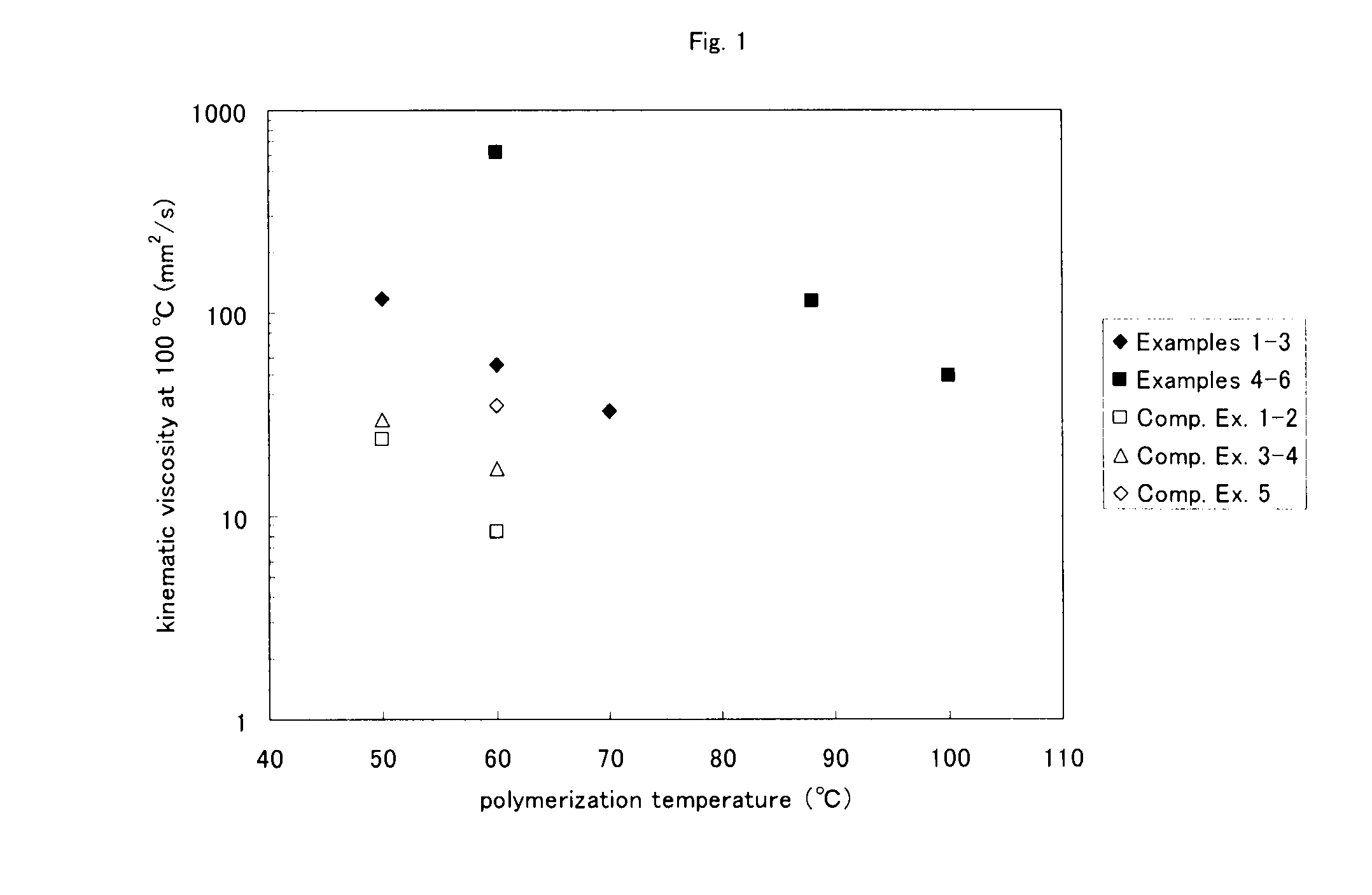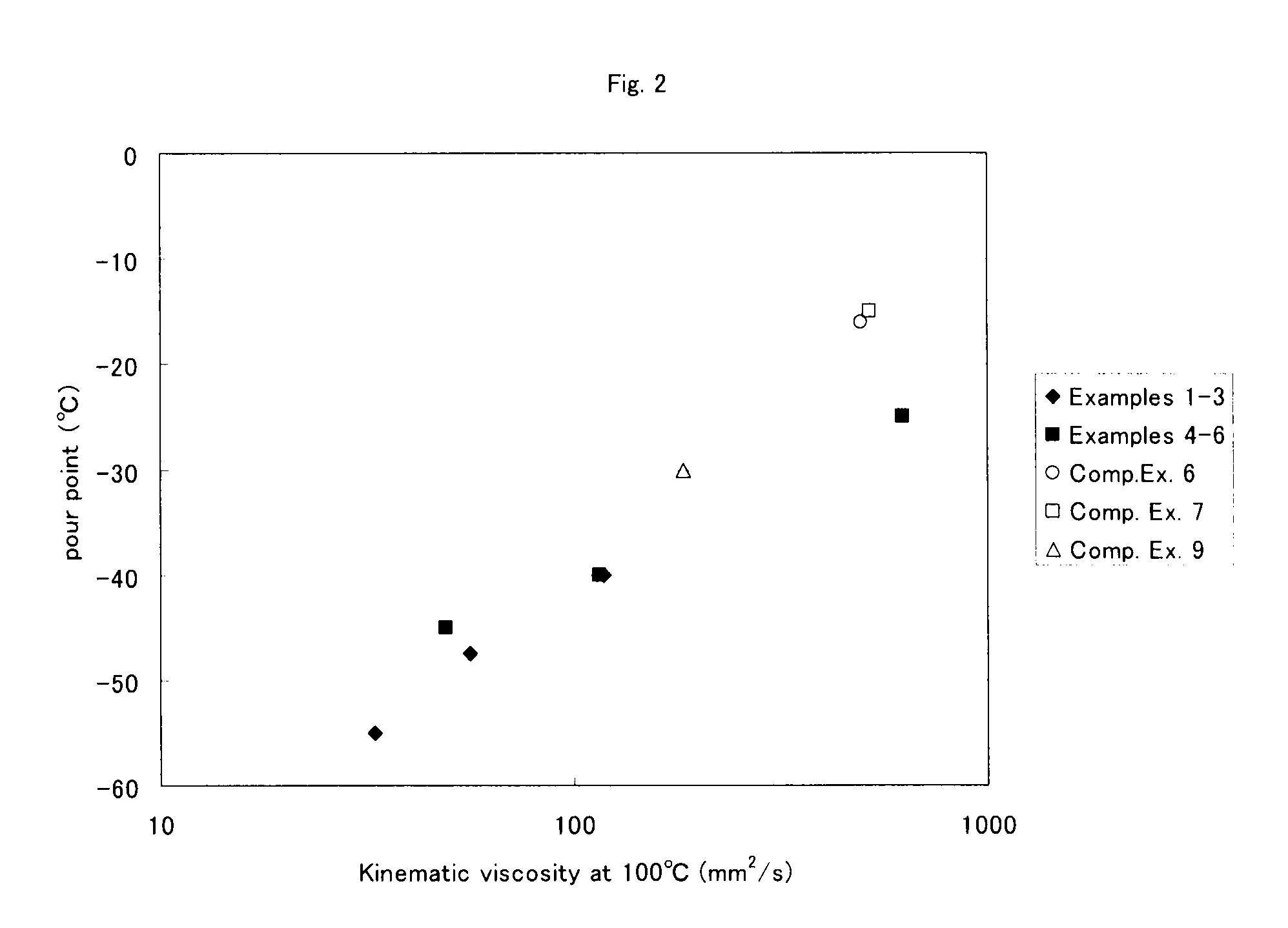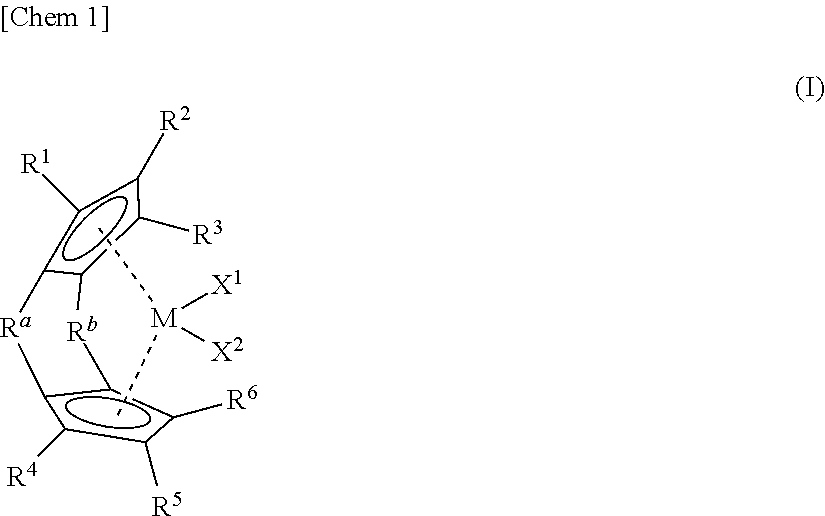Process for producing alpha-olefin polymer, alpha-olefin polymer, and lubricating oil composition
a technology of lubricating oil and polymer, which is applied in the petroleum industry, lubricant composition, liquid carbonaceous fuels, etc., to achieve the effect of having desired characteristics and easy production of viscosity suitable for use in lubricating oil
- Summary
- Abstract
- Description
- Claims
- Application Information
AI Technical Summary
Benefits of technology
Problems solved by technology
Method used
Image
Examples
production example 1
Synthesis of (1,1′-dimethylsilylene)(2,2′-dimethylsilylene)-bis(cyclopentadienyl) zirconium dichloride
[0117]About 13.8 g (600 mmol) of metal Na and 400 ml of dry tetrahydrofuran (THF) were loaded into a 1,000-ml three-necked flask replaced with nitrogen, and the mixture was stirred at 0° C. 5 minutes after that, 1 to 2 ml of cyclopentadiene were dropped to the mixture. Once the generation of hydrogen stopped, 1 to 2 ml of cyclopentadiene were newly added to the resultant mixture. The above operation was repeated until a total of 50 ml (600 mmol) of cyclopentadiene were added. The reaction solution changed from a colorless, transparent one to an incarnadine one. After THF had been removed by distillation under reduced pressure, the resultant crystal was washed with hexane twice and solidified by drying under reduced pressure. As a result, cyclopentadienyl sodium as a pink powder was obtained.
[0118]457 ml of THF were added to 43.0 g (480 mmol) of cyclopentadienyl sodium at 0° C., and ...
production example 2
Synthesis of (1,1′-dimethylsilylene) (2,2′-isopropylidene)-bis(cyclopentadienyl) zirconium dichloride
[0124]100 ml of THF were added to 12.8 g (143 mmol) of cyclopentadienyl sodium at 0° C., and the mixture was stirred. After the solution had been cooled to −78° C., 50 ml of a solution of 17.3 ml (143 mmol) of 6,6-dimethylfulvene in THF was dropped to the solution. The reaction solution showed a deep orange color, and became slightly turbid. After having been stirred at room temperature for 3 hours, the reaction solution was hydrolyzed with 100 ml of water. After the solvent had been removed by distillation under reduced pressure, the remainder was separated with water and hexane, and the organic layer was dried with anhydrous magnesium sulfate. The solvent was removed by distillation, and the remainder was distilled under reduced pressure (30° C. / 10.6 Pa). As a result, 4.66 g of Compound (6) were obtained (in 18.9% yield).
[0125]In a 200-ml Schlenk flask replaced with nitrogen, 4.66 ...
example 1
[0129]A stainless autoclave having an internal volume of 1 l was sufficiently dried and replaced with nitrogen. After that, 200 ml of 1-decene were charged into the autoclave, and the temperature of the mixture was increased to 60° C. After 0.5 mmol of methylaluminoxane (2.0-mmol / ml toluene solution; 0.25 ml) was loaded into the autoclave, loaded were 5 μmol of (1,1′-dimethylsilylene)(2,2′-dimethylsilylene)-bis(cyclopentadienyl) zirconium dichloride obtained in Production Example 1 (5-μmol / ml toluene solution; 1 ml). After that, hydrogen was immediately introduced into the autoclave to attain 0.05 MPaG, and polymerization was initiated.
[0130]120 minutes after that, 10 ml of methanol were added to the resultant so that the polymerization might be stopped. The contents were taken out and added to 200 ml of a 1-mol / l hydrochloric acid. Then, the mixture was stirred. The solution was transferred to a separating funnel, and the organic layer was fractionated. After that, the organic laye...
PUM
| Property | Measurement | Unit |
|---|---|---|
| kinematic viscosity | aaaaa | aaaaa |
| temperature | aaaaa | aaaaa |
| hydrogen pressure | aaaaa | aaaaa |
Abstract
Description
Claims
Application Information
 Login to View More
Login to View More - R&D
- Intellectual Property
- Life Sciences
- Materials
- Tech Scout
- Unparalleled Data Quality
- Higher Quality Content
- 60% Fewer Hallucinations
Browse by: Latest US Patents, China's latest patents, Technical Efficacy Thesaurus, Application Domain, Technology Topic, Popular Technical Reports.
© 2025 PatSnap. All rights reserved.Legal|Privacy policy|Modern Slavery Act Transparency Statement|Sitemap|About US| Contact US: help@patsnap.com



